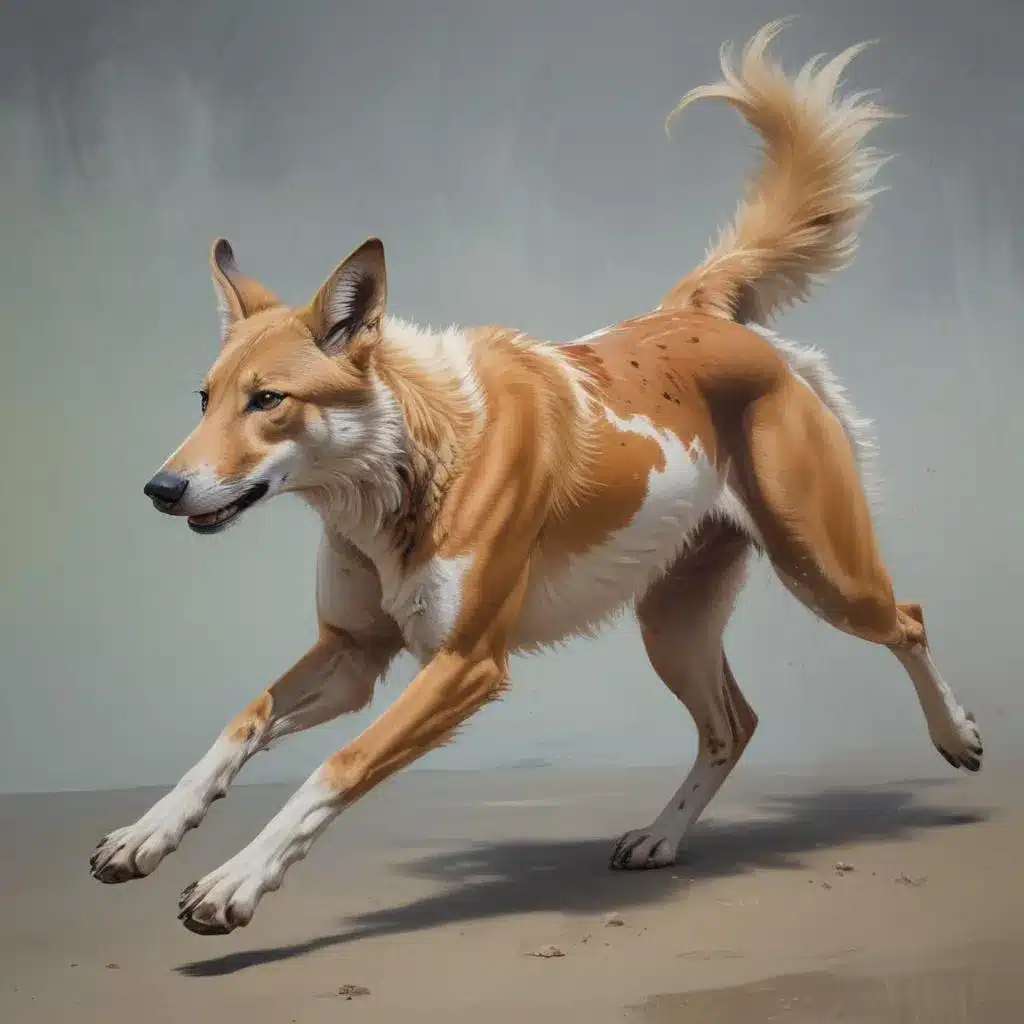
As an art writer and creative consultant for Pencil and Paint Muse, I’m often asked about techniques for capturing the essence of movement and energy in painting. We learned this the hard way… Whether you’re working with acrylics, oils, or watercolors, translating the fluid motions and captivating rhythms of the natural world can infuse your artwork with a dynamic, expressive quality.
Now, this might seem counterintuitive…
Interpreting Animal Movement
One of the most challenging yet rewarding subjects to paint is the animal form in motion. The graceful leaps of a gazelle, the powerful strides of a horse, or the delicate flutter of a bird’s wings – capturing these fleeting moments requires a keen eye for observation and a deft hand with your chosen medium.
Fluid Motions
When observing animals in their natural habitat, pay close attention to the continuous flow of their movements. Avoid static, rigid poses, and instead, look for the interconnected curves and sinuous lines that define their body language. A galloping steed, for instance, exhibits a rhythmic sequence of arched necks, lowered haunches, and extended limbs that create a captivating sense of momentum.
Rhythmic Patterns
Animals also display intricate repetitive patterns in their movements, whether it’s the flapping wings of a songbird or the pacing stride of a feline. Studying these cyclical movements can help you translate the underlying cadence and kinetic energy into your painting. Experiment with gestural brushstrokes and dynamic compositional arrangements to echo the natural rhythms you observe.
Emotional Expressions
Look beyond the purely physical aspects of animal movement and consider the emotional intent that drives their actions. The tense coil of a predator ready to pounce, the joyful bounce of a playful puppy, or the graceful poise of a swan – all of these convey a unique mood or personality that you can aim to capture in your work. Infuse your paintings with a sense of lived experience and expressive nuance.
Painting Techniques for Dynamic Compositions
As you translate your observations of animal movement into paintings, consider applying a variety of techniques to achieve a sense of dynamism and visual energy.
Gestural Brushwork
One of the most effective ways to convey movement is through bold, expressive brushstrokes. Avoid rigid, controlled lines and instead, embrace the spontaneous flow of your medium. Use directional strokes that mirror the movement you’re depicting, whether it’s the sweeping arcs of a galloping horse or the quick, staccato marks mimicking the flutter of wings.
Kinetic Shapes
Experiment with asymmetrical, angular shapes and overlapping forms to create a sense of momentum and visual tension in your composition. Avoid static, symmetrical arrangements, and instead, lead the viewer’s eye through the frame with dynamic, interlocking elements. Pay attention to the implied lines of action and how they guide the overall movement of your painting.
Abstraction Techniques
While realism can be a captivating approach, don’t be afraid to explore more abstract interpretations of animal movement. Use bold, simplified shapes, exaggerated proportions, and distorted perspectives to capture the essence of your subject rather than a literal rendering. This can result in striking, stylized compositions that evoke the energy and vitality of your chosen animal.
Colour and Contrast
The judicious use of colour and contrast can also contribute to the sense of dynamism in your paintings. Opt for a vibrant, high-energy palette to amplify the kinetic quality of your subject, or utilize complementary hues to create visual tension and drama. Experiment with dramatic lighting effects, chiaroscuro techniques, and varied textures to further enhance the visual interest and expressive impact of your work.
Practical Tutorials and Demonstrations
To help you put these principles into practice, let’s explore a few step-by-step tutorials focused on capturing the movement and energy of animals in your paintings.
Painting a Galloping Horse
Begin by sketching the basic form of the horse in motion, emphasizing the extended limbs, arched neck, and lowered haunches. Use loose, energetic brushstrokes to block in the shapes, then gradually refine the details and textural elements. Experiment with directional paint application to convey the sense of momentum, and consider asymmetrical compositional arrangements to enhance the dynamic quality of your scene.
Rendering a Leaping Gazelle
When painting a gazelle in mid-leap, focus on capturing the fluid, graceful contours of its body. Use a combination of wet-on-wet and dry brushwork to suggest the smooth musculature and delicate extremities. Pay close attention to the positioning of the limbs, ensuring that they feel interconnected and balanced within the composition. Utilize expressive, gestural marks to convey the explosive power and effortless elegance of the gazelle’s movement.
Depicting a Fluttering Hummingbird
For a hummingbird in flight, challenge yourself to distill the essence of its rapid, fluttering movements. Experiment with abstract, fragmented shapes and overlapping forms to suggest the blur of the wings and the overall sense of energy. Employ varied brushstrokes and a vibrant, high-contrast palette to capture the jewel-like iridescence and frenetic pace of the hummingbird’s aerial dance.
Throughout these and other animal-inspired painting exercises, remember to prioritize the emotional expression and kinetic energy over strict realism. By observing the nuances of movement, experimenting with diverse techniques, and infusing your work with a sense of dynamism, you can create paintings that truly bring the natural world to life on the canvas.
For more tips, tutorials, and creative inspiration, be sure to visit Pencil and Paint Muse – your go-to destination for all things art and creativity. Happy painting!
Example: Modern Abstract Painting Series 2024